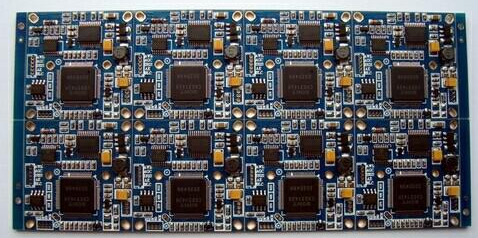Moisture is the most common and destructive main factor to PCB circuit boards. Excessive moisture will greatly reduce the insulation resistance between conductors, accelerate high-speed decomposition, reduce the Q value, and corrode the conductors. There are three types of three-proof processing technology for PCB circuit boards: three-proof paint, electronic wax, and nano-coating.
Circuit board three-proof paint, also known as circuit board three-proof paint, is a specially formulated coating used to protect PCB circuit boards and related equipment from environmental erosion, thereby increasing and prolonging their service life and ensuring the use of Safety and reliability. Circuit board three-proof paint can be divided into acrylic, silicone and polyurethane three-proof paint from the chemical composition. Generally, brushing, spraying, immersion and other processes are used. After the coating is dried and cured, a protective film will be formed to protect the circuit board from moisture, salt spray, and mildew. This is also the most used in the electronics industry.

Extensive three-proof technology. Due to the volatility and pungent odor of the three anti-paints, special rooms and equipment are required to complete the entire operation process to reduce the health hazards to the operators. The three anti-paint process probably includes slag removal, cleaning, solder joint protection, solvent dilution, paint dipping, drying, and deprotection. The process is cumbersome and the working hours are relatively long. The entire process is completed in more than 12 hours. If the circuit board after dipping the three-proof paint is reworked and soldered, the coating will be destroyed and the three-proof effect of the PCB circuit board will be affected.
The circuit board soaking process is to heat and melt 2 kinds of electronic waxes with different melting points according to a certain ratio, and then directly soak the circuit board in wax water, and then take it out to dry. The process is mainly divided into 4 steps of proportioning, melting, soaking, and drying. It is simple and convenient to operate, has no irritating odor, low cost, and does not affect welding. It is convenient for circuit board maintenance and can also be very good for welding points. The protective effect. The process of immersing electronic wax mainly takes into account the effect of the softening point of electronic wax on the product. Since general industrial white wax has a melting point of about 60°, for smart water meters installed outdoors, the internal temperature of the module is likely to be under direct sunlight. Reaching 60° will cause the wax to melt, which cannot provide a good protection effect. Therefore, an appropriate ratio and process are adopted to increase the softening point of the electronic wax and play a better protective effect.
Nano waterproof coating for circuit boards is a colorless, transparent, non-toxic, harmless, non-combustible, moisture-proof, moisture-proof and salt spray corrosion-proof liquid nano material. Generally, brushing, spraying, soaking and other processes are used. Its characteristic film forming time is shorter, the surface drying and total drying time are obviously faster than the ordinary three-proof paint; the film thickness is thinner than the three-proof paint, the PCB surface after coating appears cleaner and tidy; because the film only has A few microns, so the heat dissipation capacity is stronger, and the heat volatilizes quickly. However, at present, the cost of nano waterproof coating is relatively high, and it is mainly used for the waterproof and moisture-proof PCB of electronic products such as smart wear and portable smart terminals.